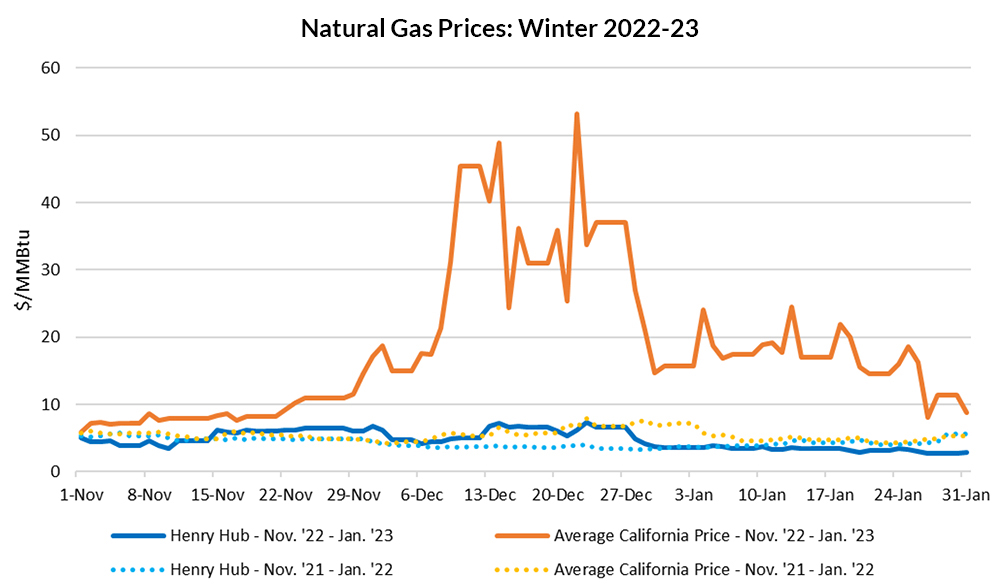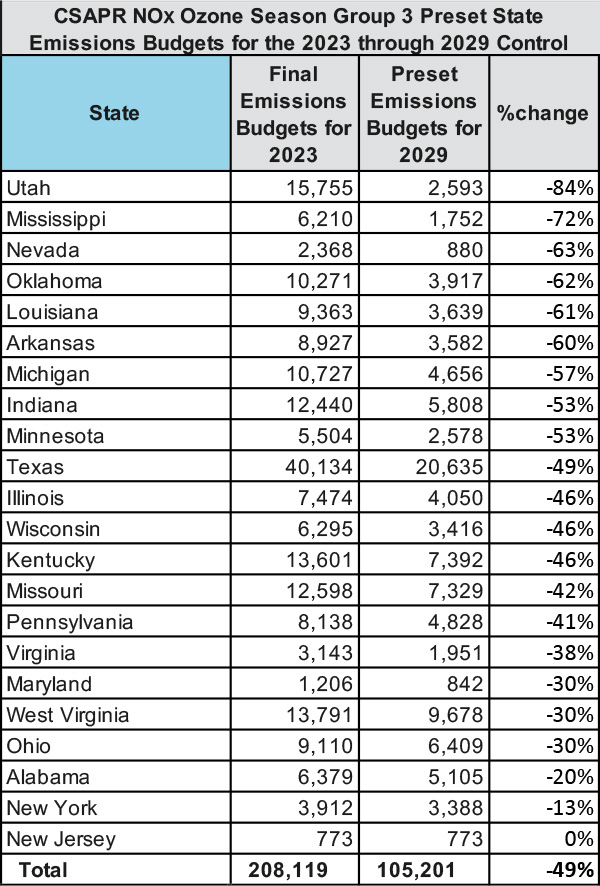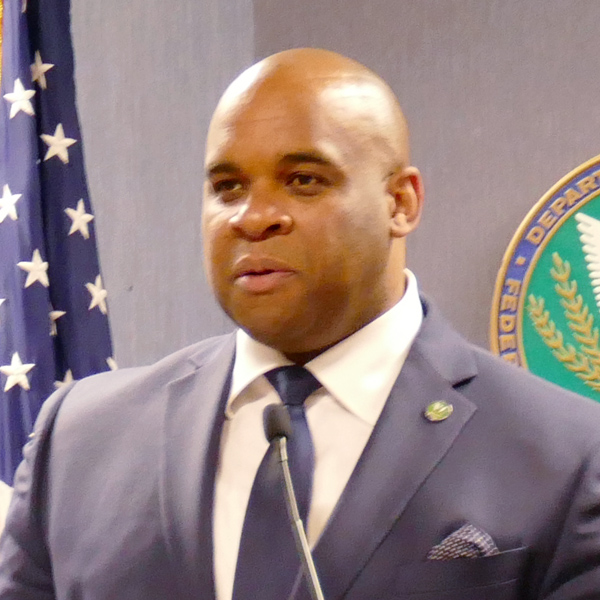The California Public Utilities Commission launched an investigation Thursday into the extremely high natural gas costs in California and much of the West this winter, when average prices at key trading hubs were five times higher than in the Eastern U.S. in December and January.
Utilities passed through the costs to ratepayers, many of whom were shocked when they saw their utility bills had doubled or tripled compared with last winter. The prolonged price spike also drove up the cost of gas-fired generation, adding $4 billion to California’s wholesale electricity costs in December and January, CAISO estimated in a report last month. (See Natural Gas Prices Add $4B to CAISO Electricity Costs.)
“This is one of the most pressing issues that ratepayers in California have faced this past winter,” CPUC President Alice Reynolds said before the unanimous vote to open the investigation. “It was an extraordinary spike in the price of wholesale natural gas, which led to steep increases in residential customer energy bills in January and February across the Western region.”
The investigation will look into the causes of the price spikes, their impact on customers, the possibility of recurrence, and the potential threats to gas and electric reliability this summer and beyond.
“The commission will also examine the utility communications to customers to determine whether they were sufficient or require modifications,” the order instituting the investigation said.
Giving ratepayers notice of high prices so they can reduce their natural gas use is one way to mitigate high prices, Commissioner John Reynolds said.
“If customers don’t even know about a price spike, they don’t really have an opportunity to change their behavior,” Reynolds said.
‘Anomalous Activities’?
The CPUC’s move followed Gov. Gavin Newsom’s request to FERC that it investigate natural gas prices in the West.
On Feb. 6, Newsom wrote to FERC Chair Willie Phillips, asking the federal regulator to “immediately focus its investigatory resources on assessing whether market manipulation, anticompetitive behavior or other anomalous activities are driving these ongoing elevated prices in the Western gas markets.”
FERC responded to Newsom in a letter this month saying it is “conducting surveillance to determine whether any market participants engaged in behavior that contributed to or took advantage of the high gas prices,” said Reynolds, Newsom’s former top energy adviser
 Natural gas prices in California this winter were far above the national benchmark at the Henry Hub in Louisiana and much higher than last winter’s prices in California. | CPUC
Natural gas prices in California this winter were far above the national benchmark at the Henry Hub in Louisiana and much higher than last winter’s prices in California. | CPUC
“FERC possesses broad powers under the Natural Gas Act to investigate and penalize anti-competitive behavior in the interstate natural gas transportation pipelines under its jurisdiction,” she said.
The CPUC does not regulate natural gas prices, but it does have oversight of utilities, including Pacific Gas and Electric, Southern California Gas and San Diego Gas & Electric that pass on their costs to ratepayers without additional markups. The CPUC named 10 utilities and gas storage companies as respondents in the investigation.
Whether the CPUC or FERC will uncover evidence of wrongdoing remains uncertain.
In an analysis published in January, the U.S. Energy Information Administration said this winter’s price spikes were driven by below-normal temperatures in the West, pipeline constraints and low storage inventories, among other factors.
“The western region receives most of its supply from other parts of the United States and Canada,” the EIA wrote. “Net natural gas flows from Canada dropped by 4% in the first three weeks of December compared with the second half of November, and 9% less natural gas was delivered from the Rocky Mountains.”
The EIA also pointed to the impact on Southern California prices from gas pipeline maintenance in West Texas, which reduced flows into the Southwest.
On Feb. 7, the CPUC, CAISO and the California Energy Commission held a joint hearing to understand the factors that caused the cost increases. Market analysts and utility representatives who testified cited conditions such as an El Paso Natural Gas pipeline that exploded in Arizona in August 2021, impacting one supply line to California, and CPUC-imposed capacity limits at Southern California Gas’s Aliso Canyon underground storage facility, where a massive methane leak occurred in October 2015.
Newsom acknowledged in his letter to FERC’s Phillips that cold weather certainly “exacerbated” the gas price increases but lower-than-normal temperatures and other “known factors cannot explain the extent and longevity of the price spike,” he said. “It is clear that the root causes of these extraordinary prices warrant further examination.”

